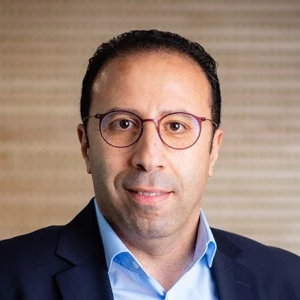More than two decades after entering China, L’Oréal has established itself as that nation’s market leader in beauty products, and it is still gaining momentum; in 2018, it reported its highest sales growth rate in China in 14 years. In the early 1970s, Toyota became a dominant force in Indonesia when it opened its first auto assembly joint venture. Despite dramatic growth in the Indonesian market and mounting competition, Toyota remains the undisputed leader, with around half of passenger car sales, including its Daihatsu brand. Back in the late 19th century, Siemens supplied China’s first pointer telegraph and helped build the country’s first power plant and tram line. Today, China is Siemens’ second-largest overseas market, with 35,000 employees and 21 R&D hubs, which are helping to build everything from leading-edge unattended train systems and smart-city solutions to digital manufacturing systems.
Succeeding in emerging markets, with their challenging business environments, hard-to-navigate bureaucracies, and sometimes volatile economic and social climates, is difficult even for many of the world’s leading companies. To succeed year after year, and in some cases decade after decade, is an astounding accomplishment. Yet some multinationals have been able to do just that, maintaining powerful market positions through economic booms and busts, dramatic political and social change, and intensifying competition from rising domestic challengers .
How to build durable businesses that can weather unanticipated shocks has become a top-of-mind issue for CEOs. This is especially true in light of today’s new global landscape , which is being rapidly redefined by accelerating technological change, unpredictable trade rules, shifts in geopolitical power, increased scrutiny of big business, and social polarization. For these reasons, competing on the basis of resilience will be critical to winning in the 2020s .
Resilience in emerging markets is all the more critical because, for all their volatility, many of these economies will enjoy GDP growth that outpaces that of developed economies for the foreseeable future. The Organisation of Economic Co-operation and Development estimates that middle-class spending in emerging markets will increase from 25% of global consumption in 2009 to nearly 70% by the year 2030.
The Keys to Lasting Success
What makes some multinational enterprises so resilient in certain emerging markets, while others continue to struggle? To unlock this riddle, we followed up on a Boston Consulting Group study published in 2018 that analyzed the success formulas of MNCs based in developed economies that are winning in emerging markets . We identified several keys to these companies’ success: smart market entry and expansion moves, innovative products and pricing, an intimate understanding of consumers, fast and widespread delivery of goods, excellence in recruiting and grooming talent, strong engagement with stakeholders, and mastery of digital technologies.
This time, we looked at more than 60 MNCs from mature economies and focused on those that have continued to grow, or at least remain stable, in the same emerging markets since 2016. These included nations in Africa, Asia, Latin America, and the Middle East.
Resilience in emerging markets is all the more critical because, for all their volatility, many of these economies will enjoy GDP growth that outpaces that of developed economies for the foreseeable future.
We identified three additional characteristics that distinguish resilient MNCs: they make long-term commitments to specific markets, have country-centric organizations that delegate decision rights to local managers, and invest to build strong local capabilities. Each of these characteristics enables resilient MNCs to continually adapt to shifting realities in emerging markets that often upend less adaptable competitors. We illustrate these characteristics with examples from Siemens, General Electric, LG, L’Oréal, Toyota, and Diageo.
Long-Term Commitment
Economic and political instability in emerging markets can make business performance and returns unpredictable from year to year. Winning MNCs focus on a market’s long-term potential and remain committed to investing and steadily creating value, even in volatile times. They also tend to align their activities with a given market’s long-term development agenda.
Siemens’ experience in China exemplifies the benefits of long-term commitment. The company started selling products in China in 1872 and established its first permanent office there in 1904. And it is still going strong. The group’s Chinese revenue has grown by an average of 4% annually from 2012 through 2018, when it reached €8.1 billion.
A good barometer of Siemens’ commitment has been its willingness to enter into joint ventures with Chinese partners across the country. In 1985, after China reopened its doors to foreign investment, Siemens was the first foreign company to sign a comprehensive cooperation agreement with the government, thereafter establishing joint ventures spanning its many industrial units. In the early 1990s alone, Siemens opened operating companies in fields as diverse as computerized tomography, industrial control systems, lighting, rail signaling, optical fiber cables, handsets, and home appliances. By now, Siemens has partnered with hundreds of Chinese industrial enterprises to drive digital transformation. Among its most recent collaborations is one with Cathay Industrial Biotech to build a world-class digital biomanufacturing site. Another is with local universities and scientific research institutes at its Wuhan Industry Maker Space, which offers an intelligent manufacturing ecosystem to help companies accelerate innovation.
Winning MNCs focus on a market’s long-term potential and remain committed to investing and steadily creating value, even in volatile times.
Siemens’ commitment to China has enabled it to land a number of high-profile projects. For example, the company has contributed to the construction of 24 high-voltage direct-current links operating in China, provided efficient-turbine technologies to more than 45% of the country’s fossil fuel power plants, and installed signaling systems in 33 metro lines in 15 cities. Siemens is continuing to invest in China’s future through innovation centers that span a range of leading-edge industrial technologies. At its center in Wuxi, for example, Siemens has collaborated with Miracle Automation Engineering to develop a digital-car demonstration assembly line. In April 2019, Siemens’ cloud-based, open Internet of Things operating system, MindSphere, successfully deployed and operated on Alibaba cloud infrastructure, enabling Chinese customers to develop their own applications and products and offer secure digital services. Siemens has cooperated with more than 90 Chinese universities and research institutes on more than 750 R&D projects. As of 2018, it has built more than 400 laboratories in cooperation with Chinese universities and vocational schools and trained more than 4,000 teachers.
In Africa, General Electric has similarly continued to make bold, long-term investments to sustain its success. GE entered South Africa in 1898 and has been in a number of other African markets since the 1960s and ’70s. The company has long-term partnerships in Tunisia, Egypt, Kenya, Tanzania, South Africa, and Nigeria in power generation, aviation, and health care. It recently began collaborating with Angolan and Nigerian government agencies to help achieve national development goals in energy and health. In Morocco, it has partnered with the government to meet the country’s renewable-energy goals, and in Kenya, GE Healthcare was selected by the Ministry of Health to provide radiology infrastructure.
Country-Centric Organizations
Emerging markets are highly dynamic, with rapid growth in some sectors, swiftly changing consumer behavior, and constantly evolving competitive landscapes. Country-centric organizations that can make decisions quickly help resilient MNCs more effectively anticipate and react to shifts in the local business environment.
Investments in a strong on-the-ground organization have been critical to LG’s ability to maintain its market share in India, where it is the leader in refrigerators and second in televisions. The South Korean company’s share of India’s rapidly growing TV market has dipped only slightly since 2015, to 26%, even though the number of available brands over that period has increased tremendously.
Country-centric organizations that can make decisions quickly help resilient MNCs more effectively anticipate and react to shifts in the local business environment.
LG’s Indian management team has had virtual autonomy in running the business since the company entered the market in 1995. The Indian team has built an efficient local manufacturing and distribution base and a strong R&D organization. In 2016, LG India adopted a new strategy of building products based on insights into specific Indian needs and preferences. For example, it has introduced Mosquito Away TVs and air conditioners, which emit ultrasonic waves that repel mosquitos. LG also has an extensive regional distribution network in India staffed by its own personnel and a nationwide retail network that offers more than 250,000 consumer touchpoints. This enables LG to quickly rotate its stock in retail outlets and penetrate smaller cities and rural areas better than most of its competitors.
A strong local organization in China has helped L’Oreal execute its strategy, which focuses heavily on consumers and has helped it become the leader in that nation’s beauty market. Since 2010, L’Oréal’s sales in China have grown by 180%, significantly faster than those of its closest competitor. In 2018, the company reported that its China business had grown 33% like for like, the highest annual rate in 14 years.
Local product development, marketing, and an extensive online as well as offline retail presence have been critical to L’Oréal’s approach. From the beginning, the company has offered a brand portfolio of both international and local brands. In 2005, it established a research and innovation center in Shanghai’s Pudong district to develop products tailored to Chinese consumers. For example, L’Oréal incorporates ingredients based on traditional Chinese medicine into some of its products. The company’s EpiSkin unit operates a Chinese center that develops reconstructed human skin for use in ingredient and product testing.
L’Oréal’s marketing and retail operations have been just as consumer-centric. In 2010, the company opened its first shop on the online marketplace Tmall for L’Oréal Paris and later acquired the Chinese brand Magic, the country’s leader in facial tissue mask technology, which it subsequently deployed in many other markets. More recently, it deepened its partnership with Tmall in order to leverage data-driven analytics and a value chain that better connects consumers, products, and channels. L’Oréal brands have also developed pioneering partnerships with Chinese online companies such as Alibaba, JD.com, and VIP. In partnership with Tencent, the company launched the Brand Data Center, a media venture aimed at improving precision, efficiency, and traceability through social media and big data.
L’Oréal is just as active in the offline world, where it has around 10,000 points of sale across China. In 2018, it opened a concept makeup store in collaboration with Colorlab by Watsons that offers access to makeup artists, and it recently launched its new virtual makeup try-on technology, both online and offline. The next strategic step, the company has indicated, is to combine the offline and online worlds to offer an all-in immersive experience to consumers at all touchpoints.
Strong Local Capabilities
Many emerging markets have underdeveloped infrastructure and institutional gaps. The resilient MNCs that we have studied build competitive advantage by investing in local capabilities, such as talent training, logistical infrastructure, manufacturing ecosystems, and distribution.
Toyota’s continuous investment in its Indonesian operations has been key to its ability to maintain its dominant position in that nation’s passenger car market for nearly a decade. The Toyota brand has about a 30% market share and its Daihatsu affiliate 19%.
Resilient MNCs build competitive advantage by investing in local capabilities, such as talent training, logistical infrastructure, manufacturing ecosystems, and distribution.
Toyota entered the Indonesian market in 1970, when it began assembling Land Cruisers with Gaya Motor. It then launched a joint venture with the PT Astra group that in 1977 introduced Kijang multipurpose vehicles, which it sold mainly in Southeast Asia. In 2003, the company launched the Avanza, a mini multipurpose vehicle developed with Daihatsu. Over the years, Toyota has brought its lean manufacturing system to Indonesia. In 2012, it announced a $1.3 billion capacity expansion plan to enable it and other Toyota Group companies to better target the country’s rapidly growing middle class. Toyota now has four world-class plants in North Jakarta and Karawang that are supported by a well-developed domestic supply chain. Toyota exports around half of its Indonesian production, primarily to other Southeast Asian nations and to Africa. It exports parts to more than 80 countries.
Toyota has also invested steadily in its Indonesian talent, which it views as a knowledge workforce. In 2016, it opened the Toyota Indonesia Academy. The Toyota Learning Center and Toyota Technical Center, meanwhile, support continuous improvement of skills.
Strong local capabilities have likewise been key to the continued success of Diageo in East Africa, the world’s fastest-growing beer market. In 2003, Diageo’s East Africa Breweries unit created Senator, a lager developed specifically for low-income consumers in hard-to-reach locations. The popular beer is half the price of Diageo’s international brands and does not require refrigeration. This has helped East Africa Breweries increase its revenues by an average of 5% annually since 2007, to $683 million in 2018, and boost its share of Kenya’s lager market from 69% in 2013 to 73% in 2018. As part of its “aspirational, affordable, and accessible products” strategy, Diageo has also launched locally manufactured spirits, including Smirnoff X1 vodka, McDowell’s No. 1 whisky, and a new flavor of Gordon’s gin.
Establishing a successful business in an emerging market is challenging enough. Maintaining that success—especially in an era of radical technological, geopolitical, and social change—requires an extraordinarily sustained level of commitment and a willingness to ride out turbulence. A handful of resilient MNCs that invest for the long run, take a country-centric approach, and build strong on-the-ground capabilities and vest them with decision rights are proving that emerging markets can indeed live up to their potential as engines of long-term growth. MNCs that are willing to make this commitment—and sustain it—will position themselves to win in the 2020s.









